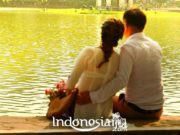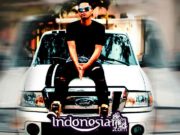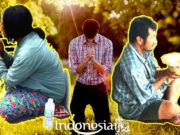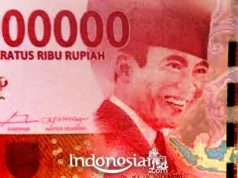The Asmat tribe is one of the Indigenous tribes of the Land of Papua. The Asmat tribe is known for their unique wood carvings. The population of the Asmat tribe is divided into two, namely those who live on the coast and those who live in the interior
History of the Asmat Tribe
Asmat is a tribe in Papua. The Asmat tribe is known for their unique wood carvings. The population of the Asmat tribe is divided into two, namely those who live on the coast and those who live in the interior. These two populations differ from each other in dialect, way of life, social structure and rituals. The coastal population is further divided into two parts, namely the Bisman tribe which lies between the Sinesty and Nin rivers and the Simai tribe.
The Asmat are among the Mappi, Yohukimo Jayawijaya and various other tribes on the island of Papua. As with other tribes in this region.
Some of the Asmat tribes live in coastal areas with distances ranging from 100 km to 300 km, even the Asmat tribe who are in inland areas, surrounded by heterogeneous forests containing rattan, wood (gaharu) and tubers with a travel time of 1 days 2 nights to reach one residential area to another. Meanwhile, the distance between the village and the sub-district is about 70 km. With such geographical conditions, walking is the only way to reach each other’s village areas.
The Asmat believe that they are descended from the god Fumeripitsy, who descended from an unseen world across the sea behind the horizon, where the sun sets every day. According to their belief, the ancestral god used to land on earth in a place far away in the mountains. On his way downstream until he came to a place now inhabited by the lower Asmat people, he had many adventures.
In the mythology of the Asmat people who lived in Flaminggo Bay, for example, the god was named Fumeripitsy. When he walked from upstream to the sea, he was attacked by a giant crocodile. The mortar boat he was in sank. So that a fight broke out which finally killed the crocodile, but he was seriously injured. He was then carried away and stranded on the banks of the Asewetsy river, the village of Syuru now.
Luckily there was a Flamingo bird who took care of him until he recovered; then he built a yew house and carved two very beautiful statues and made a drum, which sounded very strong. After he was done, he began to dance continuously without stopping, and the magical power that emanated from his movement gave life to the two sculptures he carved. Soon the statues began to move and dance, and they later became the first human pair, the ancestors of the Asmat people.
Religious / Belief System
In the belief of the Asmat people, the Asmat ethnic groups are now descendants of gods who descended from the world of magic. The gods down to earth and land somewhere in the mountains. From there they went on an adventure with various challenges along the river until they arrived at the area where the Asmat tribe currently resides. One of the known gods is Fuumeripitsy, who is considered the ancestor of the Asmat tribe in the Flaminggo bay.
The Asmat people believe in various kinds of spirits which are classified into 3 (three) types, namely:
- The spirit of the good ancestor, which is called Yi-ow
- The spirit of the ancestor of evil, which is called Osbopan
- The spirits of ancestors who are evil as a result of that person dying silly are called Dambin – ow
The Asmat people are also familiar with various kinds of religious ceremonies to communicate with the spirits of their ancestors, including decorating shields, carving masks, or making statues. The making of these objects is usually enlivened by a feast of food, singing and dancing as well as a demonstration of the adventure story of the god Fuumeripitsy with movement and dialogue.
Asmat Tribe Customs
Like people in general, in carrying out their life processes, the Asmat people also have special rituals or events, which are as follows:
1. Pregnancy
During this process, future generations are properly guarded so that they can be born safely with the help of their birth mother or mother-in-law.
2. Birth
Not long after the birth of the baby, a simple salvation ceremony is held where the umbilical cord is cut using the Sembilu, a tool made of bamboo that is stretched. Furthermore, breastfeeding until 2 years or 3 years of age.
3. Marriage
Marriage applies to the Asmat tribe who is 17 years old and is carried out by the parents of the man after both parties reach an agreement and through a test of courage to buy a woman with her dowry of an antique plate based on the money value of the Johnson boat boat agreement, if there is a shortage in it. the interpretation of Johnson’s boat price, the man is obliged to pay it and during the repayment period the man is prohibited from committing acts of abuse even though he is allowed to live under one roof.
4. Death
If the tribal chief or customary chief dies, his body is kept in a mummy form and displayed in front of the tribe’s joglo, but if the general public, the body is buried. This process is carried out with the accompaniment of singing in Asmat language and cutting the knuckles of the family members left behind.
Asmat language
In the Asmat community, there are languages which linguists call the Language of the Southern Division language group, namely southern Papuan languages. This language classification has been studied by C. L. Voorhoeve (1965) and is included in the non-Melanesian Papuan languages phylum class. These languages are further classified based on the area of the Asmat people, namely the Asmat people in the coastal area or downstream and the Asmat upstream.
In particular, linguists divide these languages, namely the division of the downstream Asmat language into parts of the northwest coast or Flamingo coast groups such as Kaniak, Bisman, Simay and Becembub and parts of the Southwest Coast or Kasuarina groups such as Batia and Sapan. . The division of the upstream Asmat language into the Keenok and Kaimok groups.
To find out the language of the Asmat people, you can do this by identifying the world’s languages in the family, sub-family, family, and sub-family. In addition, efforts to identify the language of the Asmat people can be done by looking at aspects of phonetics, phonology, syntax, morphology and semantics of the Asmat language.
Asmat clothing
Apart from being famous for their carving, the Asmat tribe also has distinctive traditional clothes. All the ingredients for making these clothes come from nature. It is not wrong to think of the Asmat tribe’s clothes as a representation of their closeness to nature.
In general, the traditional clothes of Papuan men and women are almost the same, only wearing a subordinate such as an androk which is made of knitted sago leaves which is neatly made to resemble an anderok or skirt and is worn as a subordinate.
On the head, a cover made of knitted sago leaves is worn and the upper part is filled with cassowary feathers.
The Asmat tribe wears traditional Rumbai-Rumbai clothes, only to cover certain parts. Rumbai-Tumbai made from sago leaves.
Asmat art
The Asmat tribe has the art of carving, especially carving statues, masks, shields, the Asmat sculpture style, including:
1. Gaya A, Asmat Hilir and Hulu Sungai Arts.
Statues in this style are arranged from top to bottom according to the order of the genealogy of their ancestors. For example, mbis is made if the community will take revenge for the death of their ancestors who died in the war against the enemy.
2. Style B, Northwest Asmat Art.
The shape of this style sculpture is oval slightly wider at the bottom. The head is separate from the rest and is shaped like the head of a turtle or fish. Sometimes there are pictures of ancestors on the head, while the decoration of the body parts is in the form of a flying weasel, a box, the head of a tadung bird, a snake, a worm, and so on.
3. Style C, East Asmat Art.
This style is a distinctive feature of the East Asmat carving styles. The shields that were made were generally very large and even exceeded the height of the Asmat people. The top is not clearly separated from the rest and is often decorated with black and red stripes and white dots.
This D style shield was almost the same size and height as the C style shield, only the head was separated from the body. Morphs that are often used are geometric decorations such as circles, spirals, brackets and so on.
Art related to religious ceremonies or homage to ancestral spirits, namely:
- Mbis is the manufacture of mbis poles or statues of ancestors
- Yentpojmbu is the creation and inauguration of Yew’s house
- Tsyembu is the manufacture and inauguration of mortar boats
- Yamasy is the shield ceremony
- Mbipokumbu is a mask ceremony
1. Wood Carving or Sculpture
The Asmat are also very adept at making wood carvings or statues. Although the carvings are not clearly patterned, each carving depicts the greatness of the Asmat tribe and the great respect for their ancestors. In plain view, their carvings can be in the form of a shield (in Asmat it is called Gembes), a human, or a boat.
The art of carving the Asmat tribe is very popular abroad. Many tourists admire this Asmat tribe’s art. The Asmat tribe understands that their carvings have a high selling value. Therefore, they sell many of their carvings. Usually the price ranges from one hundred thousand to millions of rupiah.
2. Tobe dance
Who doesn’t know Tifa? That is the traditional musical instrument of the Asmat tribe. Elongated round shape similar to a drum. On the surface of the tifa is a carving, depicting a symbol taken from the Bis statue. The Bis statue is a statue that is considered sacred by the Asmat tribe. This tifa is usually played to accompany the traditional Asmat dance, namely the Tobe Dance or what is known as the War Dance.
Tobe dance is often played during traditional ceremonies. This dance is performed by 16 male dancers and 2 female dancers. With movements that jump or jump accompanied by the rhythm of the tifa and the beat of the songs, this dance looks very excited. This dance is intended to ignite the spirit of the soldiers to go to the battlefield.
3. Music Art
The Asmat people have a special musical instrument that is usually used in important ceremonies. The musical instrument commonly used by the Asmat people is the ti’a which is made from a hollowed wood stem selonor. round shape is like a drum. Ti’a carvings are in the form of ancestral patterns or sacred animals. ti’a surface there is a carving, depicting a symbol taken from a bus statue.
The bus statue is a statue that is considered sacred by the Asmat tribe. The bus statue depicts the appearance of a family member who has died. At the top it is wrapped with lizard skin and the skin is tied with fire-resistant rattan. Ti’a is usually named according to the person who is has died. This ti’a is usually carved and sculpted by the local. This ti’a is usually played to accompany the traditional Asmat dance, namely the Tobe Dance or what is called the War Dance
Asmat Tribe Traditional House
There are 2 types of traditional houses of the Asmat tribe that have their respective functions and roles in relation to maintaining the Asmat tribe culture, namely:
1. Jew
The Asmat tribe has a traditional house called jew or often called a bujang house. This jew traditional house is in the form of a stilt house with an area generally 10-15 meters but some are up to 50 meters long with a dozen meters wide. This jew house has a special position in the structure of the Asmat tribe community, because it was built for special interests when carrying out traditional activities or according to customary provisions.
This jew house serves as a place to discuss or discuss all matters relating to the lives of residents, starting from traditional meetings, a place for making handicrafts and wood carvings, a place for war planning, to decisions regarding their village as well as the residence of the single men of the Asmat tribe so that they are known as single house by the local community.
Besides that, this bachelor house functions as a sacred house and for religious ceremonies and is a place that is considered sacred by the Asmat tribe community. So that there are several customary rules that the Asmat community must learn and understand, including the conditions for their development.
This traditional house also functions as a storage area for weapons of the Asmat tribe such as spears, arrows for hunting, noken, which is a bag made of woven plant fibers. It is said that not just anyone is allowed to touch the noken stored in this jew house. Because noken is believed to cure various disease with certain terms and conditions. There are several things concerning this Asmat tribe’s traditional jew house, namely:
- Made of wood which is always erected facing the river.
- Generally, it has an area of 10 × 15 meters.
- The poles use iron wood which is then carved with Asmat carving.
- The roof of the house is made of woven sago leaves or palm leaves.
- Not using nails in the construction but using ropes from rattan or plant roots.
2. Tysem
The tysem house is also called the family house, because this house functions as a place to live for those who are already married. Usually there are 2 to 3 pairs of families living in Tysem, consisting of 1 senior nuclear family and 2 to 3 junior families. The number of members of the core family of the Asmat community usually 4 to 5 or 8 to 10 people.
This Tysem traditional house is placed around the Jew traditional house because of its smaller size, which is 3x4x4 meters. The Tysem house has similarities to the Jew house which is in the form of a stilt house and in the manufacturing process it does not use building materials in the form of nails because the materials used are natural materials there is a forest.
Livelihood System
In societies where the level of civilization or culture is still simple, their livelihood is also simple. The livelihood system includes: hunting and gathering, farming in the fields, farming with irrigation, raising livestock and fishing.
Hunting and gathering are the oldest forms of livelihood and occur in various parts of the world. To improve hunting results, usually with certain techniques, for example by means of unseen science.
In addition, there is a habit of sharing the game with relatives and neighbors. The rest is processed and sold to the outside community and to markets. Farming in the fields is a form of farming without irrigation, but is gradually being replaced by sedentary cultivation: farming in fields is found in tropical jungle areas, especially in Southeast Asia.
Irrigated farming arose in various parts of the world located in the waters of large rivers, because the soils were fertile. Some of the things that need to be considered are the problems of land, capital, labor and technological problems regarding irrigation, consumption, distribution and marketing. Livestock is usually done in savanna, steppe and desert areas. In central Asia raising horses, camels, goats and sheep.
Looking for fish is also an old way of living. This was done by ancient humans who lived near rivers, lakes or the sea.
Means of transportation
The means of transportation of all kinds and forms are elements of culture. Since ancient times, humans have developed a means of transportation, even though it is still simple. In traditional society, the most important means of transportation are rafts / canoes, boats, wheeled trains, drag tools and animals.
Since long time ago humans have used animals as a means of transportation. In Siberia, since ancient times people have used cows, buffaloes, donkeys and elephants as means of transportation. North Asia and Northern Canada, Reider deer and dogs are important transportation animals. To transport goods using a tool called Travois and a tool drag (sledge).
Source : gurupendidikan






























